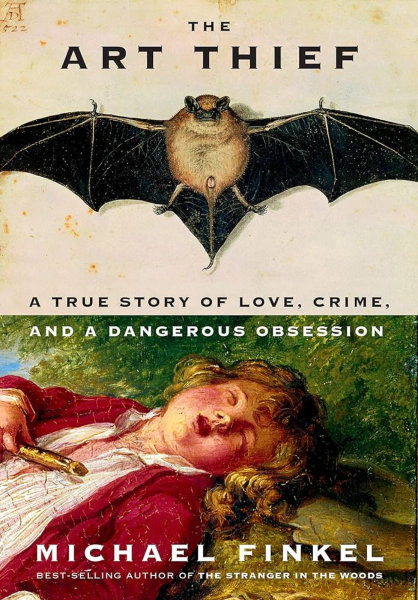Breitwieser stole because he could, and was good at it. He wanted to surround himself with beauty, to “gorge himself on it.” He was an amateur devotee of aesthetics, the study of beauty, frequently feeling overcome with a “coup de coeur” whenever he saw beauty in a work of art, which he then longed to possess. He was also cunningly resourceful as a thief, with lightning-quick reflexes, and brazen charm, knowing how to obtain the object for himself. He justified this compulsion by claiming that museums “imprisoned” art, while he “liberated” it. At no point did he appear to recognize that this is a pathologically selfish attitude, nor did he ever express remorse for his crimes or for the harm these caused. In fact, as Finkel himself observes, the story of art has been seen by some as “a story of stealing”: Greece still claims the Elgin Marbles in the British Museum were stolen; Napoleon helped himself to Egyptian antiquities in 1798.
This is not by any means to diminish the iniquity of Breitwieser’s thievery. Yet those who would dismiss Finkel’s book as merely a sensational potboiler should pay more attention to the author’s subtlety. He begins and ends his narrative with references to Georg Petel’s seventeenth-century ivory sculpture of Adam and Eve in the Garden of Eden, which Breitwieser stole from the Rubens House museum in Antwerp.
In Petel’s depiction of Adam and Eve, the couple is physically close enough to one another to touch, having eyes only for one another. They appear not to see the snake Satan entwined around the tree beside them. Intentionally or otherwise, the author, by way of the sculpture, reminds us of the perils of temptation that the Genesis story encapsulates for us. Disobedience to God’s commandments results in the expulsion of both Adam and Eve from the Garden of Eden, the Fall of Man, and the coming of sin into the world, sin as in theft. As Milton wrote, Paradise is now lost, and an angel tells the couple “Dream not of other worlds.” Utopia is no more; only the naïve or delusional believe in Unicornia. Yet there, in his very bedroom, Petel’s sculpture itself was for years an unheeded warning to the unrepentant art thief as he gloated over his spoils and congratulated himself on his cleverness. The story behind the sculpture is profoundly moral, as is the inevitable fall of Breitwieser himself. As Pico Iyer has noted, “Adam and Eve had to quit Eden if only so they could learn to resist the lure of serpents.” This thief still lived in his mom’s house, in a make-believe sanctuary. Joni Mitchell sang plaintively in Woodstock: ‘We’ve got to get ourselves back to the garden.’ You can’t: it’s long gone.
After he had served his time, and become temporarily reconciled with his father, the hapless thief could not overcome the temptation to steal again, again, and yet again. He is compulsively addicted to his obsession to possess objects that do not belong to him. He loses his father’s sympathy; his girlfriend no longer wants anything to do with him. He is arrested and jailed again and again, sometimes for petty theft. The world inevitably loses its passing interest in his celebrity status, and he cannot be gainfully employed on account of his criminal record and recidivist status. He is loveless, friendless, alone, ruined. Too late has come self-knowledge:
“I was a master of the universe,” he confesses. “Now I’m nothing.”





